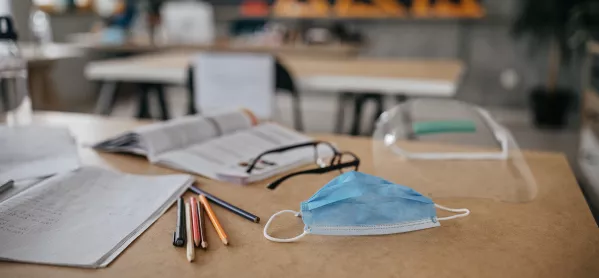Rising Covid-related absence in schools is leading to “havoc” as teachers are forced to juggle online and in-person teaching, headteachers say.
The warning comes as latest school attendance statistics released by the Department for Education (DfE) today show an increase in pupil and teacher absence due to Covid in the week before half term.
Rise in pupil absence before half term
Covid-related absence among state school pupils was 3.2 per cent on 21 October, up from 2.6 per cent the week before.
This equates to 248,000 children being absent due to Covid-19, up from 209,000.
The main reason behind the absences was a confirmed case of coronavirus, with around 127,000 pupils testing positive, compared to around 111,000 on 14 October.
The findings also show that 2.1 per cent of teachers and school leaders were absent due to Covid-related reasons, up from 1.8 per cent the previous week.
Covid: Scale of regional learning loss is revealed
Catch-up: Zahawi wants all schools to be open for 6.5 hours a day
Learning loss: UK pupils lost third of learning time during pandemic
Commenting on the latest statistics, general secretary of the Association of School and College Leaders (ASCL) Geoff Barton said that the increase in absence is “wreaking havoc in many schools because they have to juggle online and in-person learning for different groups of pupils at different times with fewer staff”.
“It is an impossible situation,” he added.
School leaders have previously warned about a lack of supply cover as increasing numbers of teachers have had to isolate after catching Covid-19.
Regional disparities
The data also showed a stark difference in absences by region, with the South West recording the highest Covid-related absences at 5 per cent.
London had the lowest rate of Covid-19 related absence, at 1.6 per cent.
Tes is awaiting a response from the DfE on whether part of this disparity could be due to problems with PCR testing, which are said to have particularly hit the South West region.
‘Sluggish action from government’
Mr Barton added that he hoped half term has helped to reduce transmission and reduce disruption but was concerned that these changes would be only temporary.
He suggested that in order to tackle these disruptions, the government must put more energy into “the vaccination programme for 12- to 15-year-olds, encourage home-testing among eligible pupils and provide funding for air ventilation systems in schools and colleges”.
He added: “We have said this repeatedly and there has been some signs of improvement in the first two of these measures, but it is frustrating how sluggish the government has been in taking action.
“As we enter the second half of the autumn term, school leaders are worried that unless the government does more, disruption is likely to continue for the foreseeable future.”
Workforce fund
General secretary of the NAHT school leaders’ union Paul Whiteman said the ongoing impact of staff absence linked to Covid was “a particular concern for school leaders”.
He said: “We know that schools are finding it increasingly hard to cover staff absence and in many cases, they simply cannot afford the cost of so many supply teachers. At the very least the government needs to re-establish the workforce fund that it abandoned last autumn.
“Without this crucial support, there is a real risk that schools will struggle to keep all classes open as we move into the winter months.”




